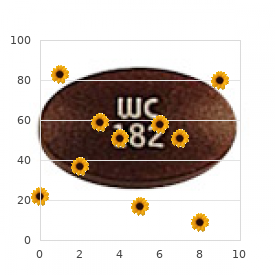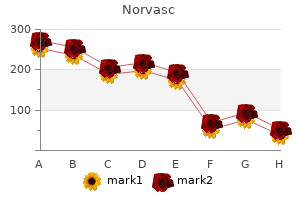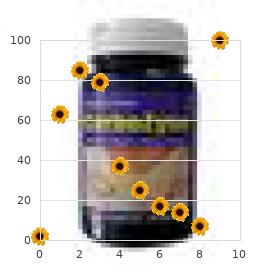"Buy norvasc 5mg mastercard, blood pressure young female".
By: A. Rathgar, M.S., Ph.D.
Program Director, The University of Arizona College of Medicine Phoenix
Vaccination not only prevents influenza illness and influenza-related hospitalizations and deaths arrhythmia in pregnancy best purchase norvasc, but also may decrease healthcare resource use and the overall cost to society blood pressure diastolic high buy cheap norvasc 10mg. Antiviral drugs for prophylaxis of influenza should be considered adjuncts to vaccine and are not replacements for annual vaccination. The sooner the antivirals are started after the onset of illness, the more effective they are. Anti-influenza agents are most effective if started within 48 hours of the onset of illness. Influenza causes significant morbidity and mortality, particularly among young children and the elderly. Seasonal influenza epidemics result in 25 to 50 million influenza cases, approximately 200,000 hospitalizations, and more than 30,000 deaths each year in the United States. Overall, more people die of influenza than of any other vaccine-preventable illness. The societal costs associated with influenza are more than $37 billion in the United States alone. The antiviral armamentarium for treatment and prophylaxis of influenza is limited, which further emphasizes the importance of prevention with vaccination and appropriate use of infection control measures during outbreaks. Research toward the development of novel antivirals and vaccines is needed for effective control of seasonal epidemics and for pandemic preparedness. The highest rate of infection occurs in children, but the highest rates of severe illness, hospitalization, and death occur among those older than age 65 years, young children (<2 years old), and those who have underlying medical conditions, including pregnancy and cardiopulmonary disorders, that increase their risk of complications from influenza. The seasonal influenza epidemics from 1979 through 2000 resulted in an average of 226,000 hospitalizations per year with more than 63% of the hospitalizations occurring in those older than age 65 years. Deaths associated with influenza often result from secondary bacterial pneumonia, primary viral pneumonia, and/or exacerbation of underlying comorbidities. The mortality peaked for those younger than age 4 years, those between the ages of 25 and 35 years, and those older than 65 years of age, which resulted in a W-shaped mortality curve, as opposed to the U- or J-shaped curve typically associated with influenza. The death toll associated with this pandemic culminated in an almost 10-year drop in the life expectancy of the population at the time. Influenza A viruses are responsible for the regular, seasonal epidemics of the flu, whereas influenza B viruses are typically associated with sporadic outbreaks, particularly among residents of long-term care facilities. Influenza A viruses are further categorized into different subtypes based on changes in two surface antigens-hemagglutinin and neuraminidase. Hemagglutinin allows the influenza virus to enter host cells by attaching to sialic acid receptors and is the major antigen to which antibodies are directed upon exposure. However, the only influenza A subtypes that have circulated among humans since the 1918 pandemic (see Pandemics and Antigenic Shift below) are H1 to H3 and N1 and N2. Asian Influenza of 1957 the Asian flu pandemic began when a new H2 subtype of influenza A surfaced in Hunan province in China in 1957. This pandemic caused more than 30,000 deaths in the United States and approximately 2 million deaths worldwide. However, immunity to one influenza subtype does not offer protection against other subtypes or types of influenza. Moreover, immunity to one antigenic variant of a subtype of influenza may not confer protection against other antigenic variants. Antigenic variants are created by point mutations in the surface antigens of a particular subtype, resulting in small changes in the hemagglutinin and/or neuraminidase molecules, which is called antigenic drift. Antigenic drift is the basis for seasonal epidemics of influenza, the reason for changes in the annual influenza vaccine, and the rationale behind the recommendation for annual vaccination. Immunity to one subtype of influenza does not confer protection against other subtypes or types. Antigenic shift occurs when the influenza virus acquires a new hemagglutinin and/or neuraminidase via genetic reassortment rather than point mutations. Conversely, antigenic shift may occur directly from avian strains that have gained competency in the human host.



Boys are affected more often than girls because of a transient increase in testosterone secretion during the third and fourth month of intrauterine life blood pressure medication used for adhd buy cheap norvasc 10mg online. It will also review evidence of efficacy and safety as well as kinetics pulse pressure low diastolic buy norvasc 5 mg low cost, interactions, dosing, and administration when relevant. Exfoliants (Peeling Agents) Exfoliants induce continuous mild drying and peeling by primary irritation, damaging the superficial layers of the skin, and inciting inflammation. This stimulates mitosis, thickening the epidermis, and increasing horny cells, scaling, and erythema. A decrease in sweating results in a dry, less oily surface and may superficially resolve pustular lesions. In the past, a rabbit model was used to study the efficacy of topical exfoliants in retarding tar-induced comedone formation and accelerating their loss (comedolysis). In this animal model, retinoic acid (tretinoin) was most active, compared with benzoyl peroxide and salicylic acid, which were respectively less active. Data from peer-reviewed literature regarding the efficacy of sulfur, resorcinol, sodium sulfacetamide, aluminum chloride, and zinc are limited. These agents are not comedolytic given that they affect the superficial epidermis rather than the hair canal. Products containing resorcinol 1% to 2% have been used for acne, often in combination with other peeling agents, such as sulfur or salicylic acid. It has good solubility in both water and alcohol and is heat stabile Thus, it is incorporated into a variety of products, including emulsions. Sodium thiosulfate, zinc sulfate, and zinc sulfide were not considered safe and effective. The effectiveness of topical retinoids in the treatment of acne is well documented. There is no consensus about the relative efficacy of currently available topical retinoids (tretinoin, adapalene, tazarotene) and oral isotretinoin. These agents act to reduce obstruction within the follicle and therefore are useful in the management of both comedonal and inflammatory acne. They improve acne vulgaris by inhibiting microcomedone formation, diminishing the number of mature comedones and subsequently, inflammatory lesions. Topical retinoids, unlike isotretinoin, do not decrease production of sebum, but primarily decrease inflammation, normalize keratinocyte differentiation, and increase keratinocyte proliferation and migration. By loosening and decreasing corneocytes, they increase skin permeability, facilitate absorption of other agents, such as antimicrobials or benzoyl peroxide, and increase penetration of oral antibiotics into the follicular canal. This decreases the overall duration of antibiotic treatment and lessens the possibility of resistance. Therefore, combination products with oral or topical antimicrobials are available for increased efficacy, faster onset of effects, decreased total antibiotic use and risk of resistance, and shorter duration of treatment. Retinoic acid (vitamin A acid or tretinoin) slows the desquamation process, reducing numbers of both microcomedones and comedones. Adapalene is a stable, fast-acting, antiacne treatment that has significant antiinflammatory and comedolytic preperties. Its antiinflammatory effect is due to the inhibition of oxidative metabolism of arachidonic acid and inhibition of chemotactic reponses. It is as effective as adapalene in reducing noninflammatory and inflammatory lesion counts when applied half as frequently. Compared with tretinoin, it is as effective for comedonal and more effective for inflammatory lesions when applied once daily. Retinoids tend to produce remissions that are maintained for extended periods of time, provided the accompanying irritation does not impede patient adherence. However, such adverse effects including erythema, xerosis, burning, and desquamation, are issues for many patients.

Most recently blood pressure log sheet printable buy norvasc 5 mg without a prescription, an observational registry of patients receiving chemotherapy for colorectal cancer at clinics across the United States was used to determine actual costs associated with eight commonly prescribed treatment regimens blood pressure medication causes diabetes discount norvasc 10mg on line. Depending on the regimen, total cost of chemotherapy for a full course of treatment could vary by as much as $36,999. The cost-effectiveness of therapeutic regimens in various treatment settings has also been evaluated. Colorectal Cancer New Strategies and Agents in Development At present, fluorouracil plus leucovorin, bevacizumab, capecitabine, irinotecan, oxaliplatin, and cetuximab are the most frequently used chemotherapeutic agents for cancer of the colon and rectum. New chemotherapy agents have been studied in an attempt to further improve antitumor efficacy and reduce treatment toxicities. But traditional chemotherapy agents, which target rapidly dividing cells, kill both malignant and nonmalignant cells, and new cancer therapies are needed to improve therapeutic outcomes. In particular, targeted therapies aimed at the underlying cancer pathology are increasingly being developed and used in colorectal cancer treatment. A variety of agents targeted toward augmenting the host immune system response have undergone, or are currently undergoing, study for colorectal cancer, including monoclonal antibodies and tumor vaccines. Another potential strategy is regulating tumor growth through the inhibition of various cell signal-transduction pathways. Agents that can alter microenvironmental factors which support angiogenesis and tumor metastases may also be of benefit. Studies are under way to use this and other information to identify rational therapeutic approaches for select patients. One of these strategies involves measuring plasma fluorouracil concentrations and adjusting individual patient dosing regimens to achieve fluorouracil concentrations within an established therapeutic range to optimize efficacy and minimize side effects. Published data suggest that only 20% to 30% of patients treated with fluorouracil achieve therapeutic concentrations. Substitution of intravenous fluorouracil with oral capecitabine may have positive economic effects, but data are limited. As many as 12,000 deaths each year might be prevented if all individuals who were candidates for colorectal screening participated in a regular program. Patients receiving bevacizumab should be evaluated for hypertension and proteinuria. Symptoms of recurrence such as pain syndromes, changes in bowel habits, rectal or vaginal bleeding, pelvic masses, anorexia, and weight loss develop in less than 50% of patients. Patients who undergo curative surgical resection, with or without adjuvant therapy, require close follow up based on the premise that early detection and treatment of recurrence could still render them cured. In addition, early treatment for asymptomatic metastatic colorectal cancer appears superior to delayed therapy. Although treatment approaches for metastatic colorectal cancer have been historically assessed by their ability to produce a measurable objective tumor response, which is generally believed necessary for any treatment to improve survival, the effects of therapies on survival are clinically more meaningful than their ability to induce a tumor response. This decision should be based on a careful assessment of the balance between risks associated with treatment (or lack thereof) and benefits of treatment. Effort should also be made to ensure that the costs of screening, diagnostic tests, treatments, and procedures for colorectal cancer are consistent with their value in improving patient outcomes. In addition, a complete blood cell count should be obtained prior to each course of chemotherapy administration to ensure that hematologic indices are adequate. Baseline liver function tests and an assessment of renal function should be evaluated prior to and periodically during therapy. These tests and other selected serum chemistries should also be evaluated with the development of any new symptoms or significant change in disease status. Colorectal cancer risk and dietary intake of calcium, vitamin D, and dairy products: A metaanalysis of 26,335 cases from 60 observational studies. The use of aspirin for primary prevention of colorectal cancer: A systematic review prepared for the U.

Syndromes
- Roof of the mouth (palate)
- Other conditions that suppress or weaken the immune system
- Urinalysis
- After a day or two, the blisters become cloudy and then scab. Meanwhile, new blisters form in groups. They often appear in the mouth, in the vagina, and on the eyelids.
- Ticlopidine
- Transplant of normal lymphatic tissues to areas with abnormal lymphatic drainage (less common)

Laser photocoagulation has markedly improved sight preservation in diabetic patients blood pressure medication kinds purchase 2.5mg norvasc free shipping. If neuropathy is painful blood pressure goals purchase cheap norvasc online, symptomatic therapy is empiric, including low-dose tricyclic antidepressants, anticonvulsants (gabapentin, pregabalin, carbamazepine, and maybe phenytoin), duloxetine, venlafaxine, topical capsaicin, and various pain medications, including tramadol and nonsteroidal antiinflammatory drugs. Recently, another anticonvulsant, topiramate, has shown promise in the reduction of symptoms, with the positive side effect of weight loss in type 2 diabetes patients, though tolerability is problematic. Clinical manifestations of diabetic autonomic neuropathy include resting tachycardia, exercise intolerance, orthostatic hypotension, constipation, gastroparesis, erectile dysfunction, sudomotor dysfunction (anhidrosis, heat intolerance, gustatory sweating, and/ or dry skin), impaired neurovascular function, and hypoglycemic autonomic failure. Improved glycemic control, discontinuation of medications that slow gastric motility, and the use of metoclopramide (preferably for only a few weeks at a time) or erythromycin may be helpful. Gastric pacemakers as therapeutic hardware are rarely used, though available, and cisapride, removed from the market several years ago, is still available for compassionate use. Orthostatic hypotension may require pharmacologic management with mineralocorticoids or adrenergic agonist agents. In severe cases, supine hypertension is extreme, mandating that the patient sleep in a sitting or semirecumbent position. Diabetic diarrhea frequently responds to a 10- to 14-day course of an antibiotic such as doxycycline or metronidazole. Erectile dysfunction is common in diabetes, and initial treatment should include a trial of one of the oral medications currently available to treat erectile dysfunction. People with diabetes often require the highest doses of these medications to have an adequate response. Sudomotor dysfunction, as earlier defined, results in loss of sweating and resultant dry, cracked skin. The patient must be involved in the decision-making process and must learn as much about the disease and associated complications as possible. Emphasis should be placed on the evidence that indicates that complications can be prevented or minimized with glycemic control and management of risk factors for cardiovascular disease. Recognition of the need for proper patient education to empower them into self-care has generated programs for certification in diabetes education for pharmacists. There are three methods for assessing microalbuminuria: (1) measurement of the urine albumin:creatinine ratio in a random spot collection (preferably the first morning void); (2) 24-hour timed collection; and (3) timed. More advanced retinopathy will not regress with improved glycemia, and may actually worsen with short-term improvements in glyce- 1297 ratio of 30 to 300 mg/g albumin:creatinine. On timed collections, microalbuminuria is defined as 30 to 300 mg/24 hours or an albumin excretion rate of 20 to 200 mcg/min. Because of day-to-day variability, microalbuminuria should be confirmed on at least two of three samples over 3 to 6 months. Additionally, when assessing urine protein or albumin, conditions that may cause transient elevations in urinary albumin excretion should be excluded. These conditions include intense exercise, recent urinary tract infections, hypertension, short-term hyperglycemia, heart failure, and acute febrile illness. Glucose and blood pressure control are most important for the prevention of nephropathy, and blood pressure control is the most important for retarding the progression of established nephropathy. The American Diabetes Association and the National Kidney Foundation blood pressure goal of <130/80 mm Hg can be difficult to achieve. Three or more antihypertensives are often needed to treat to goal blood pressures. Reasons for this have been speculated on, including the increased use of statins in the placebo group, but continue to be controversial. Niacin or a fibrate can be added to reach that goal if triglycerides are 201 to 499 mg/dL. Patients with marked hypertriglyceridemia (500 mg/dL) are at risk for pancreatitis. Efforts to reduce triglycerides with glycemic control, elimination of other secondary causes (including medications), and drug therapy (fibrate and/or niacin) are effective treatment strategies. Cilostazol may be useful for reducing intermittant claudication symptoms in select patients. Revascularization is successful in selected patients, though small vessel disease that cannot be bypassed is common in diabetes.
Buy norvasc 10mg online. Top 5 Blood Pressure Monitor in India|| Best tips and tricks.

